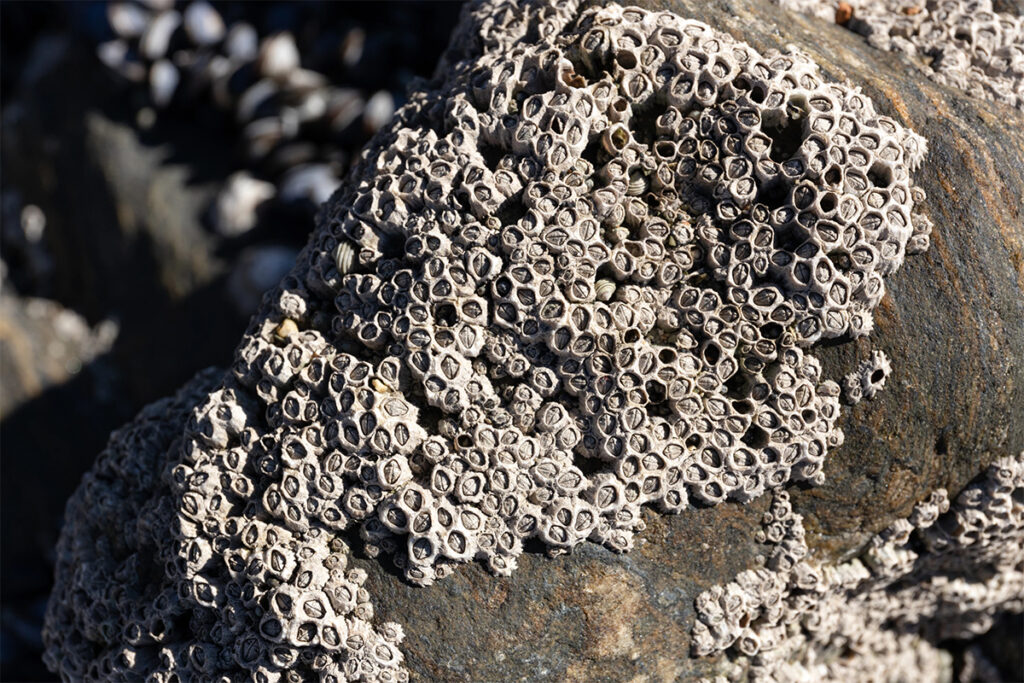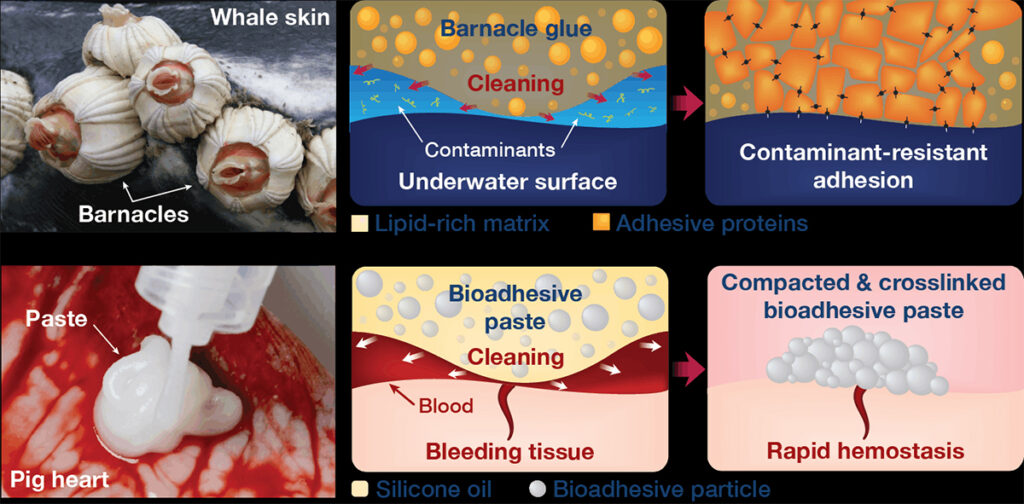Quick Hemostatic Sealing Possible with Barnacle-Inspired Bioglue

During emergencies and surgeries, bleeding is almost inevitable. Stopping the bleeding can save a person’s life. There are hemostatic adhesives that medical professionals use to stop the bleeding. In addition, there is medical-grade super glue that you can add to your first aid kit to help seal wounds that bleed profusely as a temporary measure.
New and more effective hemostatic adhesive
You may have been frustrated in the past when trying to make adhesive stick to wet skin. The same is true for hemostatic adhesives. Medical professionals and surgeons find it difficult to get adhesives to adhere when the injured area is wet with blood.
But it will all change soon, as researchers from MIT have developed a new type of surgical glue. The glue they created can stop the bleeding as fast as 30 seconds. Surprisingly, their inspiration for the glue was the super-strong underwater adhesive secreted by barnacles.
Yes, those pesky barnacles that cling to materials near or within the water, including wooden posts, rocks, buoys, pilings, bottoms of boats and ships, and even living sea creatures such as whales. If you’re a boat owner, you can attest that they are difficult to remove. But many denizens of the sea become inspiration for several scientists and researchers when developing new materials and medicines for humans.
Barnacles secrete a cement-like adhesive that cures quickly. Researchers consider this material as one of the most potent natural glues. Barnacles’ glue has a tensile strength of 5,000 pounds per square inch. The natural glue’s adhesive strength is 22 to 60 pounds per square inch. The glue’s strength was the subject of many studies, as researchers look for ways to use it commercially.
Currently, medical professionals use hemostatic agents to control bleeding during traumatic injury or surgery. The ingredients from the agents cause the blood to clot faster. However, it can take a few minutes before the glue takes effect. When there is too much blood, the hemostatic adhesive may not work at all.

Quick-acting glue
The glue the MIT researchers developed can seal a wound in 15 to 30 seconds. In their lab tests in pigs and rats, the glue remained in place for several weeks. As the tissue heals, the body slowly breaks down the glue. But they also have a solution that can dissolve the glue if they need to remove it earlier. In addition, the team found that the adhesive does not cause inflammation around the wound area.
The study’s lead author, Jungjing Wu, said that the moldable glue could easily flow in, fit, and seal the bleeding wound, even if it is irregularly shaped. However, one of the study’s lead authors, Hyunwoo Yuk said when sealing bleeding tissues, the doctor also has to consider the contamination from the blood that comes out. In their research, they found that the barnacles are doing the same thing.
For barnacles to anchor themselves, they secrete two different fluids. The first fluid is an oily substance that displaces and repels water. The second fluid is the protein-based adhesive, which sticks to the cleaned surface.
This is the condition that those researchers mimicked. In 2019, the team developed medical adhesives that can replace sutures when sealing incisions or wounds on the skin or in organs. First, they froze the sheets of medical adhesives and ground them finely. They then suspended the ground adhesives in silicone oil.
The silicone oil displaces the blood (or any liquid) from the surface for treatment. The microparticles crosslink and develop a seal. In their tests, they gave strong blood thinners to their test animals so the blood will not clot. In addition, they were able to stop the flow of blood using the bioglue.
The team will next test the bioglue on more extensive wounds. They are already thinking of first responders using the new hemostatic glue on patients when they reach them. Likewise, they envision surgeons controlling organ and tissue hemorrhages during a surgical procedure.